Football visors have become an essential piece of gear for players at all levels of the game. These tinted or clear shields, attached to the helmet’s facemask, offer more than just a stylish look.
They provide critical protection against impacts, debris, and harmful UV rays, enhancing both safety and performance on the field.
Players and coaches alike appreciate the benefits of football visors. Not only do they help prevent eye injuries, but they also reduce glare and improve visibility.
Whether you’re a professional athlete or a high school player, understanding the advantages of football visors can elevate your game and keep you safer.
What Are Football Visors?
Football visors are transparent or tinted shields attached to the facemask of a football helmet. They serve multiple purposes, including protection from physical impacts and environmental elements. Made from polycarbonate material, visors are durable and impact-resistant.
Visors enhance a player’s vision by reducing glare from the sun or stadium lights if tinted. They also offer UV protection, safeguarding the eyes from harmful rays. Also, visors provide a barrier against debris, dirt, and loose particles that could cause eye injuries.
Regulations govern the use of football visors to ensure safety and fair play. In the NFL, for example, only clear visors are permitted without a medical exemption. This ensures referees can see a player’s eyes, which is crucial for assessing their condition during games.
Football visors offer substantial benefits for enhancing safety and performance on the field when chosen and fitted properly.
Types Of Football Visors
Football visors come in various types, each offering unique benefits tailored to different needs.
Clear Visors
Clear visors provide standard protection without altering visibility. They shield players’ eyes from debris, dirt, and sudden impacts.
Clear visors are mandatory in the NFL unless a player has a medical exemption. Youth leagues and high schools also commonly adhere to this rule to maintain uniformity and safety.
Tinted Visors
Tinted visors reduce glare from stadium lights or sunlight. They offer enhanced contrast, allowing players to see more clearly during bright conditions.
Tinted visors come in various shades like smoke or mirrored. However, leagues often restrict their use due to potential visibility concerns for medical staff during injuries.
Polarized Visors
Polarized visors enhance visual clarity by reducing glare from reflective surfaces like turf or wet playing fields. They provide higher contrast and better color saturation, making it easier for players to track the ball and opponents.
Polarized visors, though beneficial, might face restrictions similar to tinted ones in competitive leagues due to transparency issues during injury assessments.
Benefits Of Using Football Visors
Football visors offer numerous advantages, contributing to both safety and performance on the field. Players can benefit from their use in several ways.
Eye Protection
Football visors shield players’ eyes from impacts, debris, and UV rays. Polycarbonate visors resist shattering, providing reliable defense during collisions. These visors also block harmful ultraviolet rays, reducing the risk of long-term eye damage.
Improved Vision
Football visors enhance visibility by reducing glare and filtering out harmful light. Tinted and polarized visors, for example, minimize sunlight interference, allowing players to see clearly under bright conditions. Clear visors ensure unimpeded vision while offering essential protection.
Style And Personal Preference
Football players can choose visors that match their style and preferences. Visors come in various colors and tints, enabling players to express individuality on the field.
Though tinted and polarized visors are subject to league regulations, they still offer aesthetic appeal and functional benefits.
Safety Standards For Football Visors
Football visors must meet strict safety standards to ensure players’ protection and performance. These standards cover various factors, including material durability, anti-scratch coating, and UV protection.
Material Durability
Material durability is crucial for football visors. They’re often made from polycarbonate, known for its impact resistance and shatterproof qualities.
Polycarbonate can withstand high-energy impacts, reducing the risk of eye injuries from debris or collisions. Meeting durability standards ensures visors offer sustained protection throughout intense gameplay.
Anti-Scratch Coating
Anti-scratch coatings enhance the longevity and clarity of football visors. These coatings prevent scratches that can obscure vision and reduce the visor’s effectiveness.
Ensuring visors have a robust anti-scratch layer helps maintain clear visibility and reduces the need for frequent replacements. Performance isn’t compromised when visibility remains optimal.
UV Protection
UV protection integrated into football visors shields players’ eyes from harmful ultraviolet rays. Constant exposure to UV radiation can lead to eye strain and long-term damage.
UV-filtering visors help prevent these issues. Meeting UV protection standards ensures players benefit from enhanced safety while playing outdoors.
Football visors adhering to these safety standards provide comprehensive protection, letting players focus on their performance without compromising their well-being.
Rules And Regulations
Football visors must comply with several rules and regulations. These regulations ensure safety and maintain fair play across different levels of the sport.
NFL Rules
The NFL has strict guidelines for football visors. Players are only allowed to wear clear visors unless they have a medical exemption.
This rule is enforced to ensure that officials can see players’ eyes, which can indicate concussion or other injuries.
The visors must also meet the NFL’s safety standards for material durability and anti-scratch properties.
NCAA Rules
In the NCAA, football visors adhere to similar safety principles. Players can use both clear and tinted visors, but tinted ones require a medical exemption.
Also, visors must be made from approved materials, ensuring they are impact-resistant and provide UV protection. The NCAA emphasizes these regulations to maintain competitive equity and player safety.
High School Rules
High school football rules regarding visors are stringent to protect young athletes. The National Federation of State High School Associations (NFHS) mandates that visors must be clear, with no tinting allowed.
This requirement helps coaches and trainers quickly assess players’ eye conditions during and after plays. High school visors must also pass safety tests for impact resistance and optical clarity.
Youth Football Rules
In youth football, the primary concern is safety. The regulations often mirror those at the high school level. Visors need to be clear and free from tinting.
They must meet specific safety criteria, including being made from shatterproof materials and offering UV protection. Ensuring compliance with these rules helps protect younger players’ eyes and enhances their overall safety on the field.
How To Choose The Right Football Visor
Selecting the right football visor involves multiple considerations to ensure safety and performance. Factors such as helmet compatibility, player position, and league regulations play crucial roles.
Compatibility With Helmet
Football visors must fit securely with the player’s helmet. Most visors are designed to be universal, but checking compatibility with specific helmet models is essential.
Visors should not obstruct any part of the helmet to ensure proper functionality and protection. Verify the visor’s attachment points align with the helmet’s mounting options, and confirm that the combination offers an unrestricted field of vision.
Player Position And Needs
Different positions require varying levels of visibility and protection. For instance, running backs and wide receivers benefit from visors with enhanced glare reduction due to frequent exposure to direct sunlight.
Quarterbacks need clear visors for optimal vision and to avoid any distortion of sight. Also, linemen should prioritize visors offering maximum impact protection as they face more physical contact. Consider the specific demands of the player’s position when choosing a visor.
League Regulations
Adhering to league regulations is mandatory to avoid penalties and ensure safety. In the NFL, NCAA, and most high school leagues, clear visors are standard.
Tinted visors require medical authorization and league approval due to the need for visibility by medical personnel in case of injury.
Reviewing the specific rules and guidelines of the player’s league ensures compliance and avoids issues during gameplay.
Maintenance And Cleaning Tips
Proper care ensures football visors remain clear and functional. Clean visors regularly to prevent scratches and maintain visibility.
Follow these steps for optimal maintenance:
Use Mild Soap and Water
Utilize mild soap and warm water to clean the visor, avoiding harsh chemicals that can cause damage. Opt for a soft, lint-free cloth to gently wipe the surface.
Regular maintenance helps ensure optimal visibility. For tough spots, consider a specialized visor cleaner. Dry the visor thoroughly before reattaching it to your helmet to prevent fogging.
Avoid Abrasive Materials
Refrain from using abrasive sponges or paper towels, which may scratch the visor. Select microfiber cloths designed for delicate surfaces.
Additionally, use mild soap or specialized lens cleaners. Always store visors in protective cases to prevent damage and prolong their clarity.
Dry Completely
Ensure the visor is completely dry before use. Use a clean, dry cloth to remove any moisture, avoiding potential water spots or streaks. Dry Completely
Ensure the visor is completely dry before use. Use a clean, dry cloth to remove any moisture, avoiding potential water spots or streaks. This will ensure optimal visibility and performance during the game.
Check For Damage Regularly
Inspect the visor for cracks or deep scratches that could impair vision. Replace the visor if damage is found.
Additionally, ensure the visor fits securely on your helmet without obstructing ventilation. Regular cleaning with a soft cloth and non-abrasive cleaner will maintain clarity and prolong its lifespan.
Store Safely
Store the visor in a protective case when not in use to prevent accidental scratches or impacts. Regular cleaning with a microfiber cloth ensures optimal visibility.
Inspect for any damages frequently and replace if necessary to maintain safety and performance standards.
Frequently Asked Questions
Why are football visors important?
Football visors are crucial for enhancing player safety and performance. They offer impact protection, UV resistance, and enhanced visibility, which can significantly reduce the risk of eye injuries during the game.
What material are football visors made of?
Football visors are typically made of polycarbonate, a durable material known for its impact resistance and UV protection.
Are tinted visors allowed in all football leagues?
No, tinted visors are not permitted in many football leagues unless there is a medical exception. Most leagues, including NCAA and NFL, only allow clear visors during gameplay.
How do I properly maintain my football visor?
Proper maintenance includes cleaning with mild soap and water, avoiding abrasive materials, ensuring the visor is fully dried, checking regularly for damage, and storing it safely when not in use.
Can you use any visor with any helmet?
Generally, there is a visor fit for every helmet. Some visors are designed to be universal, while others are made specifically for certain helmet models.
Conclusion
Football visors play a crucial role in enhancing safety and performance for players across different levels of the sport.
High-quality visors made from polycarbonate provide durability, impact protection, and UV resistance. Regulations in various football leagues require clear visors, while tinted visors have specific usage guidelines.
Proper maintenance is essential for keeping visors in optimal condition. Using mild soap and water ensures effective cleaning without causing damage.
Avoiding abrasive materials prevents scratches that can impair visibility. It’s important to dry the visor completely and check for any signs of damage regularly. Safe storage further extends the visor’s lifespan.
Adhering to these practices helps maintain the visor’s effectiveness and contributes to player safety and performance on the field.

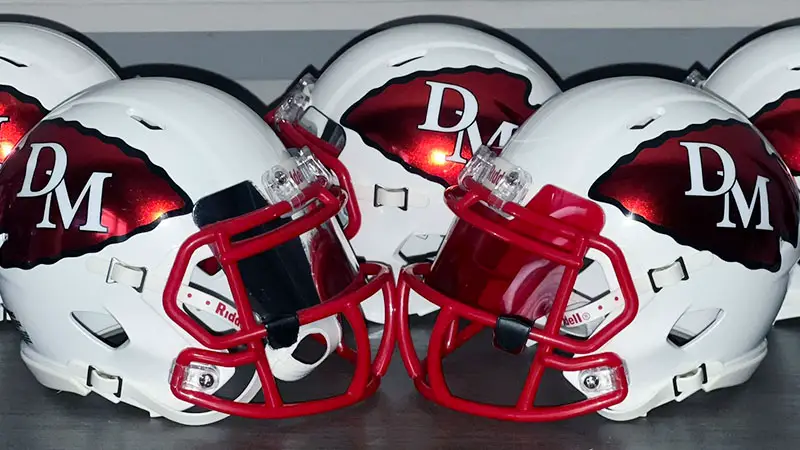
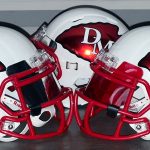
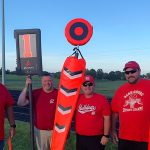
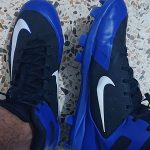
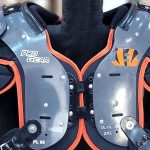
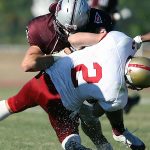
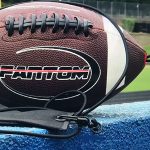
Ashley Hopkinson